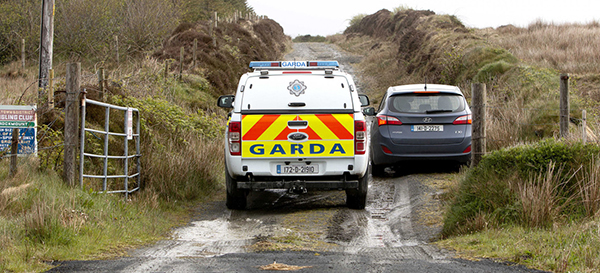British soldier ‘disappeared’ by IRA found
Published in Issue 4 (July/August 2018), News, Volume 26On 14 May 2018, almost a century after he was executed and secretly buried by the IRA, the body of British soldier Private George Chalmers was recovered from a bog near Miltown Malbay, Co. Clare, and reburied in Grangegorman Military Cemetery, Dublin.
By Pádraig Óg Ó Ruairc
George Chalmers, an orphan from Edinburgh, joined the Royal Scots Regiment of the British Army. He was stationed in Ennistymon during the War of Independence, and in June 1921 he was captured by two IRA Volunteers after he left his comrades on a motorised patrol to meet a girl he was courting.
According to local oral history accounts, Private Chalmers was interrogated but refused to give his name or any other information. There had been a number of cases in the area of British soldiers posing as deserters to gather intelligence, and the IRA officers questioning him eventually court-martialled Chalmers and sentenced him to death for spying. Chalmers pleaded for his life but, despite some dissent, the majority of the IRA officers agreed that the sentence should be duly carried out.
Scottish troops in the area had a well-deserved reputation for brutality. The Royal Scots played a leading part in the reprisals that followed the Rineen ambush, which involved sexual assault, widespread arson attacks and the killing of seven people—including two children. To be clear, there is no evidence or insinuation that Private Chalmers was directly involved in any of these reprisals, but the likelihood is that had he been a member of a different British regiment captured in the same circumstances he would not have been treated as harshly.

Above: An Garda Síochána and Civil Defence members removing Private Chalmers’s remains from the bog at Illaunbawn, Miltown Malbay, Co. Clare, in May 2018.
Details of Private Chalmers’s fate were first published in my 2009 book Blood on the Banner—the Republican struggle in Clare, but at that time the identity of ‘the soldier’ was still unknown. Years later I found documentation in Military Archives that allowed me to identify ‘the soldier’ conclusively as Private Chalmers, cited in an article in History Ireland (HI 20.6, Nov./Dec. 2012) for the first time.

Above: The exact location of Private Chalmers’s grave was always known to local people, who treated it with respect and for decades marked it with a simple wooden cross. This hand-carved stone slab was added in 2012. (Padraig Ó Ruairc)
The exact location of Private Chalmers’s grave was always known to local people, who treated it with respect and for decades marked it with a simple wooden cross. Following the publication of the History Ireland article, I was in contact with locals who had a keen interest in the War of Independence and it was decided to mark the grave with a hand-carved stone slab bearing the simple inscription: GEORGE CHALMERS, BRITISH SOLDIER, 11–06–1921. Those involved were all Republicans with no sympathy for the cause of British imperialism but who, without wanting to honour their forefathers’ oppressors, were willing to respect the graves of the enemy dead.
Peter Chalmers, a relative of Private Chalmers, had been researching his family tree when he discovered that his ancestor was still buried at the remote spot where he had been executed. In 2017 Chalmers’s family contacted the Commonwealth War Graves Commission in Britain with a view to exploring the possibility of giving him a formal burial. They in turn contacted the Irish authorities and, given that the precise gravesite was already marked, Chalmers’s remains were located with relative ease. It was reported that when the grave was opened little remained of the body except for a few bone fragments but that Chalmers’s British Army uniform survived complete, with his money preserved in the pockets. Following a religious service, Chalmers was reinterred in Grangegorman. Afterwards his family released a statement saying: ‘We are eternally grateful to the local community for having looked after the grave’.
Interestingly, Chalmers is not the only member of ‘the disappeared’ from the Irish Revolution of 1916–23 whose remains have been recovered recently. In 1990 the body of Thomas Kirby, a spy executed by the IRA, was recovered from a Tipperary bog. The remains of Patrick Joyce, an informer from Galway, were discovered in Connemara in 1998. In the 1920s the British Colonial Office engaged with the Irish authorities to recover the bodies of British soldiers killed in Ireland; they had considerable success, and there are perhaps just a dozen or more British soldiers executed by the IRA whose bodies remain hidden.
Perhaps the biggest obstacle to recovering these remains is the torrent of exaggeration, myth and half-truths that has infected the popular history of the period, suggesting that the IRA buried a body in almost every bog. Newly available archival material is making it easier, however, to separate factual oral history from unsubstantiated folklore. The discovery and reburial of Private Chalmers’s remains suggests that more of these bodies could be recovered in the future.
Pádraig Óg Ó Ruairc is from County Clare and has written several books on the Irish Revolution.
















